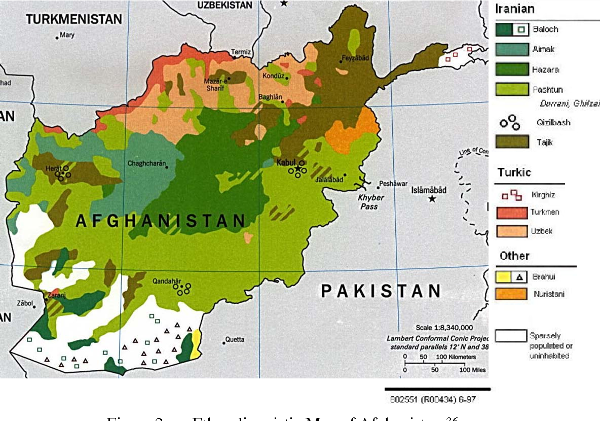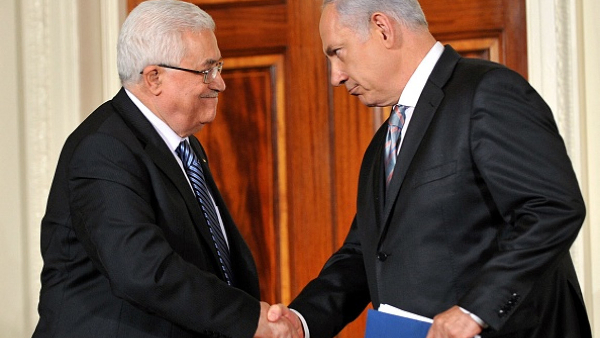By: Ayatullah Shaheed Sayyid Muhammad Baqir al-Hakim
In the previous section on pilgrimages to the tombs of the Holy Imams (‘a), we have cited the great reward and merits of visiting the tomb of Imam al-Husayn (‘a), the Master of Martyrs. This pilgrimage acquires a distinctive importance with regard to the spiritual, cultural, political, individual, and communal significance of the Event of Karbalaí.
Moreover, Imam al-Husaynís sanctuary (also called al-haíir al-husayni; the place where water would not flow over his tomb on various occasions), represented by Imam al-Husaynís holy shrine, enjoys great merit that no other place can ever have.
Many traditions report the merits of this sanctuary, such as the following one reported by Shaykh al-Kulayni, Shaykh Ibn Qawlawayh, and Shaykh al-Tusi, through several chains of authority, from Imam al-Sadiq (‘a): The place of Husaynís tomb enjoys a well-recognized sanctity. Whoever recognizes and seeks refuge through it, shall be protected.
The reporter then asked the Imam (‘a) to mark out the borders of that place.
The Imam (‘a) answering him said: From the current place of his tomb, survey twenty-five cubits from the side of his feet and twenty-five cubits from the side of the head. Since the day he was buried, the place of his tomb has been a garden of Paradise. From this place, the deeds of his visitors ascend to the heavens. All the angels of the heavens and of the earth are always asking Almighty Allah to permit them to visit Husaynís tomb. Thus, a group (of angels) is seen descending while another is ascending.1
On the authority of his father, ‘Umar ibn Thabit has reported Imam al-Baqir (‘a) as saying: Almighty Allah had created Karbalaí twenty-four thousand years before he created the Kaíbah. Since then, He deemed it sacred and blessed it. Karbalaí has thus always been sacred and blessed even before He created the creations and for all time to come. He has made it the best of all the regions of the earth in Paradise.2
Muhammad ibn Sinan reports on the authority of someone he had not named that Imam al-Sadiq (‘a) said: One day, Imam ‘Ali (‘a) led some people on a journey. When he was about one or two miles away from Karbalaí, he moved toward it. When he arrived at the place where the martyrs of Karbalaí would be martyred, he said: This is a place which contains the bodies of two hundred prophets, two hundred successors of prophets, and two hundred descendants of prophets along with their followers, all of whom were martyred.
Circumambulating that place, the Imam (‘a) took out his feet from the stirrup of his riding-animal and said repeatedly: This is a residence where the martyrs who were never excelled by those that existed before them and shall never be surpassed by those who will exist after them will be martyred.3
Imam al-Husaynís Soil
In addition to the sacredness and the rewards obtained from visiting the holy shrine of Imam al-Husayn (‘a), Almighty Allah has given this place further positive (i.e. material) particularities one of which is that the soil of this place brings about healing for the sick. Accordingly, master jurisprudents have permitted using a very small amount of this soil for healing purposes even though it is generally forbidden to eat any amount of soil.4
Many traditions recommend seeking healing from the soil of Imam al-Husaynís tomb. For instance, Shaykh al-Kulayni has reported on the authority of Yunus ibn al-Rabií that Imam al-Sadiq (‘a) said: At the head of Husaynís tomb, there is red soil that holds remedy for all maladies except death.5
‘Abdullah ibn Yaífur reports that he once said to Imam al-Sadiq (‘a), "Some people take a piece of the soil of Imam al-Husaynís tomb and it benefits them; however, when others do this, they do not find any benefit. Why is that?"
The Imam (‘a) commented: This is untrue. I swear it by Allah. Every one who takes from this soil and believes that Almighty Allah will benefit him by it, will certainly find benefit.6
Shaykh al-Tusi has reported on the authority of Zayd al-Shahham that Imam al-Sadiq (‘a) said: Verily, Almighty Allah has made the soil of Husaynís tomb a remedy for all maladies and security against all feared matters. When you intend to use any amount of it, kiss it, pass it over both your eyes and the other body organs and then say the following: O Allah, for the sake of this dust, for the sake of him who resided in it and occupied it, for the sake of his grandfather, his father, his mother, his brother, and the Imams from his descendants (‘a), and for the sake of the angels who surround him, [I beseech You to] make it a remedy for all maladies, a cure for all diseases, a security against all epidemics, and a refuge against whatever I fear.
After that, one may use it.
Abu-Usamah commented, "Since I have used it from early times, I have found it exactly as Imam al-Sadiq (‘a) had said. Since then, I have never faced any misfortune, thanks to Almighty Allah."
It is also recommended to use rosaries whose beads are made of the clay of Imam al-Husaynís tomb. One of the merits of such rosaries is that the reward of praising and glorifying Almighty Allah is recorded for one who carries such rosaries in the hand even if he is inattentive.
Muhammad ibn ‘Abdullah ibn Jaífar al-Himyari reports that he once wrote a letter to a Jurisprudent asking him whether it is or not permissible to use rosaries made of the clay of Imam al-Husaynís tomb and whether there is a merit in doing so.
My letter, he said, was answered back as follows: You may use it (i.e. the clay) in making rosaries, for there are no rosaries better than those made of this clay. One of the merits of glorifying Almighty Allah using such rosaries is that when one, having such a rosary in the hand, omits uttering words of glorification, the reward of it is still recorded for him.7
Response of Prayers under his Dome
Another distinctive merit of Imam al-Husaynís holy shrine is that all supplicatory prayers offered under the dome of this shrine will be responded.
In the word of Ahmad ibn Fahad, it is reported that Almighty Allah has compensated Imam al-Husayn (‘a) for his martyrdom with four characteristics:
(1) He has made the clay of his tomb a remedy for ailments
(2) He responds to all prayers offered under the dome of his tomb
(3) He made the other Holy Imams (‘a) descend from him
(4) He has determined the days during which his tomb is visited to be added to the lifespan of its pilgrims
Shuíayb al-íAqarqufi has reported that he once asked Imam al-Sadiq (‘a) about the reward of visiting the tomb of Imam al-Husayn (‘a), and he answered: O Shuíayb, whoever offers a prayer at his tomb or supplicates, will certainly have his supplication responded sooner or later....The least thing said to a pilgrim of Imam al-Husaynís tomb is the following: You are forgiven; therefore, make for yourself a new beginning on this day.8
Many other traditions have reported many rewards for those offering prayers and performing devotional acts at the tomb of Imam al-Husayn (‘a).
Jaífar ibn Muhammad ibn Ibrahim has reported Imam al-Baqir (‘a) to have addressed the following words to someone: What prevents you, when you need any of your requests to be granted, from coming to the tomb of Husayn (‘a), offering a four-unit prayer there, and then imploring for what you need? Verily, an obligatory prayer that is performed there is equal to one Hajj Pilgrimage and a supererogatory prayer to one ‘Umrah.9
Abuíl-Numayr has reported Imam al-Baqir (‘a) as saying: The (divinely designated) loyalty to our leadership was offered to the people of all countries, but none accepted it like the acceptance of the people of Kufah. This is because the tomb of the Commander of the Faithful (‘a) lies there. Next to him, there is another tomb (that is the tomb of Imam al-Husayn (‘a)). No visitor comes to that tomb, offers a two or four-unit prayer, and then prays to Almighty Allah to grant him his request but that He shall certainly grant him that request. Every day, one thousand angels surround this tomb.10
Optionality of Performing the Prayers in Complete or Shortened Form
The holy shrine of Imam al-Husayn (‘a) is one of the four places where it is optional to perform the obligatory prayers in complete or shortened form by travelers.11 The other three places are the city of Makkah (or the Sacred Mosque specifically), the city of Madinah (or the Holy Prophetís Mosque specifically), and the Kufah Mosque. This verdict has been issued by a large number of scholars and well-qualified jurisprudents.12
In this connection, Hammad ibn ‘Isa has reported Imam al-Sadiq (‘a) as saying: Of the collective knowledge of Almighty Allah it is revealed to perform the (obligatory) prayer in the complete form at four places; (1) the Sanctuary of Almighty Allah, (2) the Sanctuary of His Messenger (S), (3) the Sanctuary of the Commander of the Faithful (‘a), and (4) the Sanctuary of Husayn ibn ‘Ali (‘a).13
Similarly, Ziyad al-Qandi has reported Imam al-Ridha (‘a) as saying to him: O Ziyad, I love for you whatever I love for myself and I hate for you whatever I hate for myself. Perform the prayers in the complete form at the two Sanctuaries (of Makkah and Madinah), in Kufah, and at the tomb of Husayn (‘a).14
1. - Al-Hurr al-íAmili, Wasaíil al-Shiíah 10:400, H. 4.
2. - Al-Hurr al-íAmili, Wasaíil al-Shiíah 10:404, H. 5.
3. - Al-Hurr al-íAmili, Wasaíil al-Shiíah 10:405, H. 6.
4. - Imam Musa al-Kazim (‘a) is reported to have said:
śůŠ«ů ů√ķőű–űś« „Ųšķ ű—ķ»ů ŲŪ ‘ůŪķ∆«ū ŠŲ ů»ů—ÝůŖűś« »ŲŚŲ° ›ůŇŲšÝů ŖűŠÝů ű—ķ»ů…Ú Šůšů« „űÕů—Ýů„ů…Ů ŇŲŠ«Ýů ű—ķ»ů…ů ŐůŌÝŲŪů «ŠķÕű”ůŪķšŲ »ķšŲ ŕůŠŲŪÝÚ ŕůŠůŪķŚŲ„ů« «Š”ÝůŠ«ů„ű° ›ůŇŲšÝů «ŠŠŚů ŕů“Ýů śůŐůŠÝů ŐůŕůŠůŚů« ‘Ų›ů«Ńū ŠŲ‘ŲŪŕů Ųšů« śů√ůśķŠŲŪů«∆Ųšů«.Do not eat any amount of the soil of my grave for seeking blessing, because the soil of our graves is forbidden for eating except the soil of the grave of Husayn ibn ‘Ali (‘a), my grandfather. Almighty Allah has made this soil carry remedy for our Shiíah and loyalists.See al-Hurr al-íAmili, Wasaíil al-Shiíah 10:414.
5. - Al-Hurr al-íAmili, Wasaíil al-Shiíah 10:408, H. 1.
6. - Al-Hurr al-íAmili, Wasaíil al-Shiíah 10:409, H. 2.
7. - Al-Hurr al-íAmili, Wasaíil al-Shiíah 10:420, H. 1.
8. - Al-Hurr al-íAmili, Wasaíil al-Shiíah 10:422, H. 4.
9. - Al-Hurr al-íAmili, Wasaíil al-Shiíah 10:406, H. 3.
10. - Al-Hurr al-íAmili, Wasaíil al-Shiíah 10:406, H. 4.
11. - One of the unanimously agreed upon laws of Islam is that a traveler, under certain circumstances, is required to perform the obligatory prayers in shortened (i.e. qasr) form; that is to lessen the four-unit prayer into two units. Exempted from this general law are the travelers to four defined places, one of which is the holy shrine of Imam Husayn (‘a). [Translator]
12. - See, for example, Sayyid Muhsin al-Hakim, Minhaj al-Salihin 1:361, Q. 71 and Sayyid Abuíl-Qasim al-Khuíi, Minhaj al-Salihin 1:255, Q. 952.
13. - Al-Hurr al-íAmili, Wasaíil al-Shiíah 5:543, H. 1.
14. - Al-Hurr al-íAmili, Wasaíil al-Shiíah 5:546, H. 13.
LINK: https://www.ansarpress.com/english/8838
TAGS:































 Violation of the sovereignty and rights of afghan citizens by America
Violation of the sovereignty and rights of afghan citizens by America




